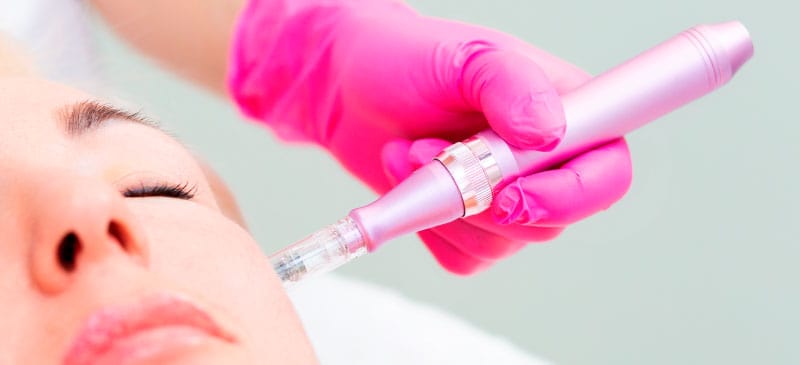This Dr. Axe content is medically reviewed or fact checked to ensure factually accurate information.
With strict editorial sourcing guidelines, we only link to academic research institutions, reputable media sites and, when research is available, medically peer-reviewed studies. Note that the numbers in parentheses (1, 2, etc.) are clickable links to these studies.
The information in our articles is NOT intended to replace a one-on-one relationship with a qualified health care professional and is not intended as medical advice.
This article is based on scientific evidence, written by experts and fact checked by our trained editorial staff. Note that the numbers in parentheses (1, 2, etc.) are clickable links to medically peer-reviewed studies.
Our team includes licensed nutritionists and dietitians, certified health education specialists, as well as certified strength and conditioning specialists, personal trainers and corrective exercise specialists. Our team aims to be not only thorough with its research, but also objective and unbiased.
The information in our articles is NOT intended to replace a one-on-one relationship with a qualified health care professional and is not intended as medical advice.
Microneedling Benefits for the Skin & How It Works
November 4, 2022

Microneedling, also called collagen induction therapy, involves the use of a tool that has tiny needles which make little pricks in the top layer of the skin. Microneedling tools include a dermapen or dermaroller. Collagen induction treatments, which are considered minimally invasive, are performed in a dermatologist or aesthetician’s office. A microneedling roller can also be purchased for home use.
Why would anyone want to have tiny needles pricking their skin? Well, this seemingly odd practice is known to trigger the body’s natural wound healing process, which can help to encourage collagen production, scar healing and an overall brighter complexion.
At first, microneedling was used for general skin rejuvenation, but now it is being used to increase collagen production and to target a wide variety of common skin concerns that can be difficult to improve — including wrinkles, scars, stretch marks, and even hair loss.
What Is Microneedling?
Microneedling or micro-needling, is a minimally invasive skin treatment in which a dermatologist or aesthetician intentionally creates tiny punctures in the top layer of skin using micro-fine needles. The needles usually measure somewhere from 0.5 to 2 millimeters in diameter. Microneedling can also be performed at home with specialized tools.
This treatment is also known as collagen induction therapy because it’s known for boosting collagen production in the skin, which can make it beneficial for a number of skin concerns including fine lines and wrinkles. Microneedling actually induces the production of new collagen in the skin, known as neocollagenesis.
Collagen is the protein that helps give our skin strength and elasticity, along with replacing dead skin cells. As we age, collagen production naturally begins to slow down which can lead to signs of aging (wrinkles, sagging skin, etc.).
The controlled skin injuries produced by microneedling send the skin into a repair mode that triggers the body to produce new collagen as well as elastin, which is another protein found in the skin that provides our skin with desirable elasticity. Microneedling also encourages the growth of fibroblasts, epithelial and endothelial cells, which can equate to a more even skin tone and a healthy glow.
Related: What Is Face Rolling? Face Roller Benefits + How to Use
Benefits
What does micro needling do to your face? There a number of possible benefits of this treatment including:
1. Boosts Collagen
As I just mentioned, collagen production in the skin is crucial to our skin’s appearance. Less collagen as we age means more wrinkles, fine lines and skin sagging. So more collagen means a more youthful complexion, and research shows that microneedling can actually boost collagen production/
According to a 2008 study, patients treated with one to four microneedling sessions and topical vitamin A and C cosmetic creams for a minimum of four weeks preoperatively experienced “considerable increase in collagen and elastin deposition” six months after completing treatment.
2. Improves Scars
Looking for a natural way to improve acne scars? A 2009 study examined the effects of multiple microneedling treatments on 37 patients with atrophic facial scarring. Atrophic scars are sunken in the skin and form when the skin is unable to regenerate tissue. Examples of atrophic scars include those resulting from acne and chicken pox. After treatment, the patients’ scars were evaluated and graded clinically at the start and two months after the conclusion of the treatment protocol.
What were the study results? Out of the 37 initial patients, 36 completed the treatment schedule and out of these 36 patients, 34 obtained a decrease in the severity of their scarring by one or two grades. Over 80 percent of the patients evaluated their microneedling treatment as “excellent” on a 10-point scale. There were no significant adverse effects recorded for any of the patients.
Even though microneedling can help with acne scars, I do want to note that it is typically not recommended for acne that is active. If you’re looking for natural treatment options for breakouts, check out these home remedies for acne.
3. Increases Overall Radiance
If you look up microneedling before and after pictures, they can be quite impressive. Post-treatment, people often report increased radiance of their skin.
After a microneedling facial, one woman noted,
I also was surprised by how soft my skin felt and how the size of my pores shrank significantly. I load up on hydrating oils every morning because of my inherently dry skin, and I’m addicted to how soft it leaves my skin feeling. But I literally woke up with cushion-like skin without all of the extra work. I decided to go makeup-free (and still am) until my skin completely heals.
4. Allows Deeper Infiltration of Topical Products
An in vitro study published in the European Journal of Pharmaceutical Sciences looked at the effects of a microneedle device (Dermaroller®) with various needle lengths including 150, 500 and 1500 micrometers. The researchers studied the effects of treatment on the morphology of the skin surface, transepidermal water loss as well as the penetration and permeation of water-attracting topical compounds like those used in skincare products.
After treatment with the Dermaroller®, the researchers observed a decrease in water loss which they believe was most likely caused by a reduction in a pore size. They also noted that skin perforation via the microneedling tool enhanced the ability of water-attracting compounds to infiltrate the skin.
Overall, it appears that microneedling definitely enhances the skin’s ability to absorb and hence benefit from topical products. It may also help to decrease pore size and skin cell water loss.
5. May Improve Hair Growth
A study published in 2013 divided 100 test subjects into two groups; one set was treated with a conventional hair loss lotion twice daily and the other received the lotion twice daily plus a weekly microneedling treatment of the scalp.
After 12 weeks, 82 percent of the microneedling group reported a 50 percent improvement in hair growth versus only a 4.5 percent improvement in the lotion-only group.
How It Works
The whole process of microneedling by a professional takes about 20 to 30 minutes. Depending on your pain tolerance, you may find that the little needles cause you moderate to very minimal pain. It’s normal to experience some redness after this skin stimulating treatment that may last up to a couple days.
How long does it take to see results from micro needling? It’s common to see skin improvement within 48 to 72 hours after treatment.
How many times do you need to do microneedling? Is microneedling permanent? Recommendations will vary, but many professionals will suggest getting four to six micro-needling treatments spaced four to six weeks apart. After that you’ll most likely be ready for a “maintenance treatment” within six months to a year later.
As certified esthetician, Claire Gross, explains, “Results are cumulative, just like working out. You’re not tearing your skin down, you’re building it up.”
There’s really no significant downtime after microneedling, but you definitely want to make sure of a few things post-treatment. First off, make sure you keep your skin well hydrated with non-comedogenic products and steer clear of harsh and/or abrasive products such as alcohol-based toners and exfoliators until your skin has fully recovered from treatment.
You’ll also want to avoid the gym, sauna and direct sunlight exposure for at least the first 24 hours after microneedling treatment since sweating can result in increased inflammation.
How much does it cost for microneedling? In-office treatments can start at $500. There are also micro-needling tools you can use at home such as the dermaroller. Prices for at-home microneedling tools can range from $30 to $200.
If you’re wondering how to use derma roller, make sure that you follow product instructions closely to ensure that you conduct your dermarolling safely and properly. If you’re concerned with optimal results from your dermaroller before and after, seeing a professional for your next microneedling treatment may be your safest bet.
Risks and Side Effects
Microneedling is contraindicated if you experience any of the following:
- Active acne
- Herpes labialis (cold sores) or any other local infection such as warts
- Chronic skin disease such as eczema or psoriasis
- Extreme keloidal (raised scar) tendency
- A blood disease or disorder
- You’re taking an anticoagulant (blood thinning) medication
- You’re a patient undergoing chemotherapy or radiotherapy
What are the side effects of microneedling? According to Yale dermatologist Macrene Alexiades, MD, PhD, frequent microneedling can lead to broken capillaries “and predispose skin to a plastic look if you over abuse it with repeated microneedle insults.” If you’re performing an at-home or in-office treatment, it’s best to limit microneedling to once a month and always make sure your skin has fully recovered before your next session.
In general, don’t perform or get a microneedling treatment on inflamed and/or irritated skin since microneedling in those cases can increase irritation and in the case of acne and other skin infections, can increase the spread of infection.
Microneedling may increase sensitivity to skincare products since it causes your skin to absorb products at a deeper level. In a case study from JAMA Dermatology, University of Utah scientists reported three instances of women who experienced itching, rashes and scarring in reaction to using a vitamin C serum along with microneedling treatment.
It’s wise to perform a patch test of any products you use after microneedling by applying the product to a small area and waiting 24 hours to to ensure you don’t have a negative reaction. Discontinue microneedling treatment if you have any unwanted reactions or results.
Final Thoughts
- What is microneedling? Microneedling or collagen induction therapy is a minimally invasive skin treatment in which a dermatologist or aesthetician intentionally creates tiny punctures in the top layer of skin using micro-fine needles.
- The controlled skin injuries produced by this treatment send the skin into a repair mode that triggers the body to produce new collagen as well as elastin.
- Microneedling benefits may include increased collagen and elastic production, reduction of scars, improvement of stretch marks, reduced pore size, increased hair growth and an overall more radiant appearance.
- You can perform microneedling at home with a dermaroller, but both at-home and in-office treatments should not occur more than once a month.
- Microneedling is not recommended if you have: have active acne; cold sores, warts or other skin infections; a chronic skin condition such as eczema or psoriasis; a tendency towards keloidal scars; a blood disease or disorder. It’s also a treatment not typically recommended if you’re taking an anticoagulant drug or are undergoing chemotherapy or radiotherapy.





